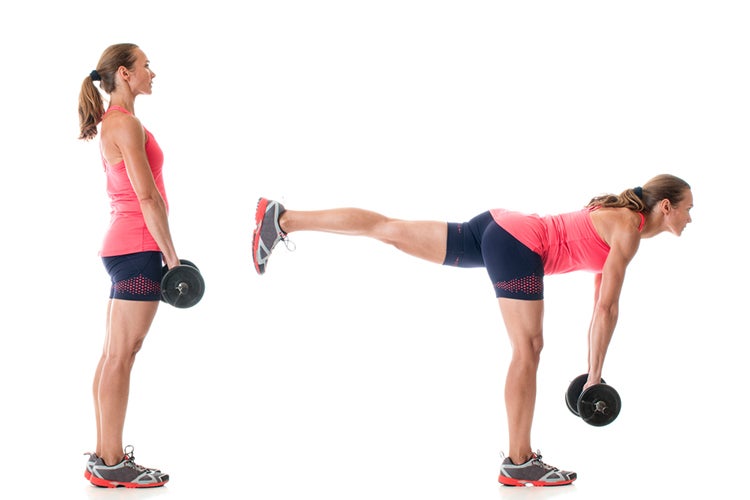5 Reasons To Incorporate Unilateral Strength Training

We don’t run or bike with both legs at the same time, so why do we train both legs together in the gym? Good question, right? The answer is, maybe you shouldn’t be.
While bilateral training (think the traditional squat) is by no means a bad thing, unilateral training (single-leg squat, lunge, step-up, etc.) may be a better choice for endurance athletes.
Unilateral exercises are an integral part of rehabilitation programs—they offer one of the most effective ways to retrain muscle groups and get your body working the way it was meant to. The thing is you don’t have to be broken to take advantage of this type of training. Aside from its ability to guard against injury and improve your overall running performance, there are five more reasons you should definitely consider incorporating unilateral training into your workout routine.
Reduce Muscle Imbalances
Everyone has a dominant and non-dominant side; generally the limbs on your dominant side are stronger than those on the non-dominant side. When you’re performing a traditional bilateral squat, in most cases, your dominant leg will compensate to some degree for any weakness in your non-dominant leg. By training one leg at a time, you’re forcing your non-dominant leg to step up and work just as hard as your dominant leg. Over time, unilateral training will resolve any muscle imbalances you may have.
RELATED: Runner’s Knee Treatment, Recovery And Exercises
Improve Muscle Recruitment
Bilateral training provides a pretty cushy exercise environment; unilateral training, on the other hand makes you work harder and recruit more muscle fibers to perform the exact same movement. Take squats for example. When done with both legs your body is in a balanced, comfortable position. Remove one leg out of the equation and now your abductors and core have to work to stabilize your pelvis while your working leg executes the squat. One limb movements also necessitate greater recruitment of the stabilizer muscles that surround the working joint.
RELATED: Plyometrics For Triathletes
Build Functional Strength
Yes, traditional bilateral training will make you stronger and make you a better runner, but how often do you really have the opportunity to use both legs equally to do something? Take running on uneven terrain, for example; each leg has to have the physical capacity to withstand uneven loads coming from any direction like when you jump over a fallen log or have to take an extra big stride to miss a puddle.
RELATED: Mirinda Carfrae’s Three-Part Strength Program
Greater Workout Intensity
Some runners find strength-training tedious because it can lack the vigor of cardio. Well, unilateral training allows you to crank the volume on your workout intensity because you don’t have to rest between sets. Since you’re working one leg at a time you can move from one leg to the next, allowing each leg some recovery time without giving your heart and lungs any time off. The constant movement will push your intensity through the roof, making it an awesome addition to your cross-training arsenal.
RELATED: High Intensity For High Performance
Incorporated Core Training
When you train one leg at a time, you automatically throw your body off balance. Unilateral exercises provide a disruptive torque to the body, forcing your core muscles to engage in order to neutralize the force and keep your body upright. The uneven weight distribution instantly recruits your deep stabilizer muscles and has them working throughout the duration of the exercise, giving you a solid core workout without any added effort on your part.